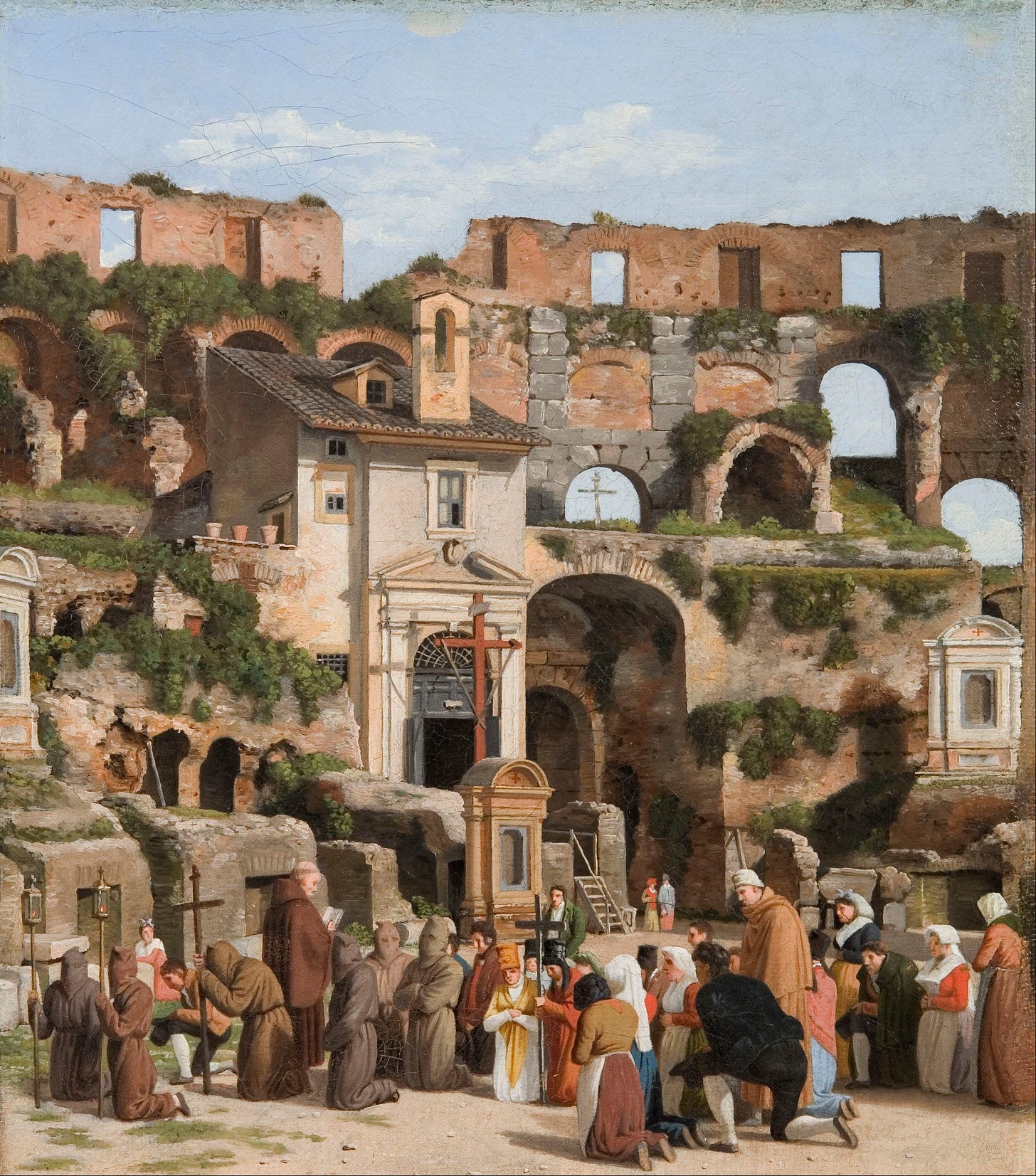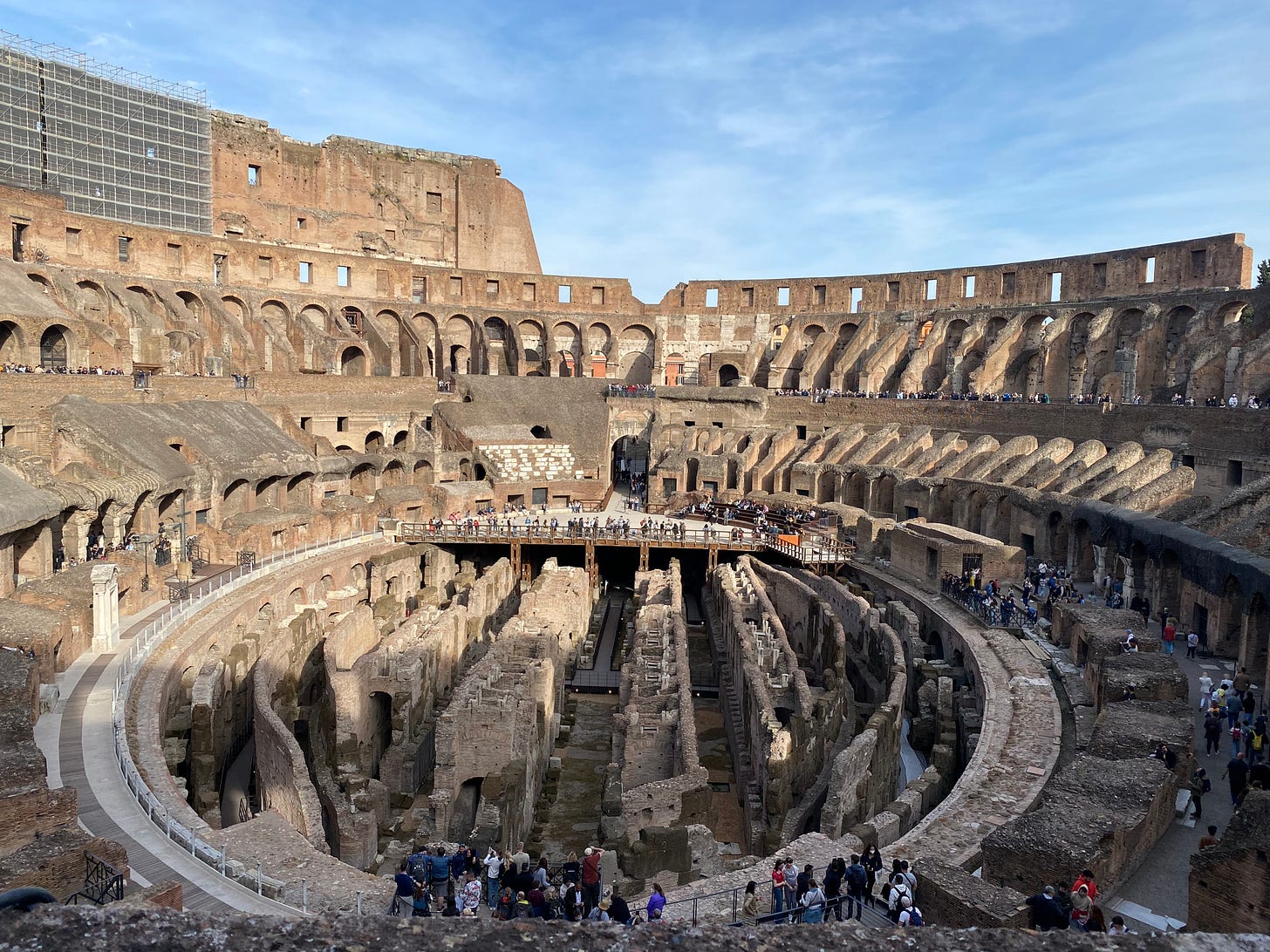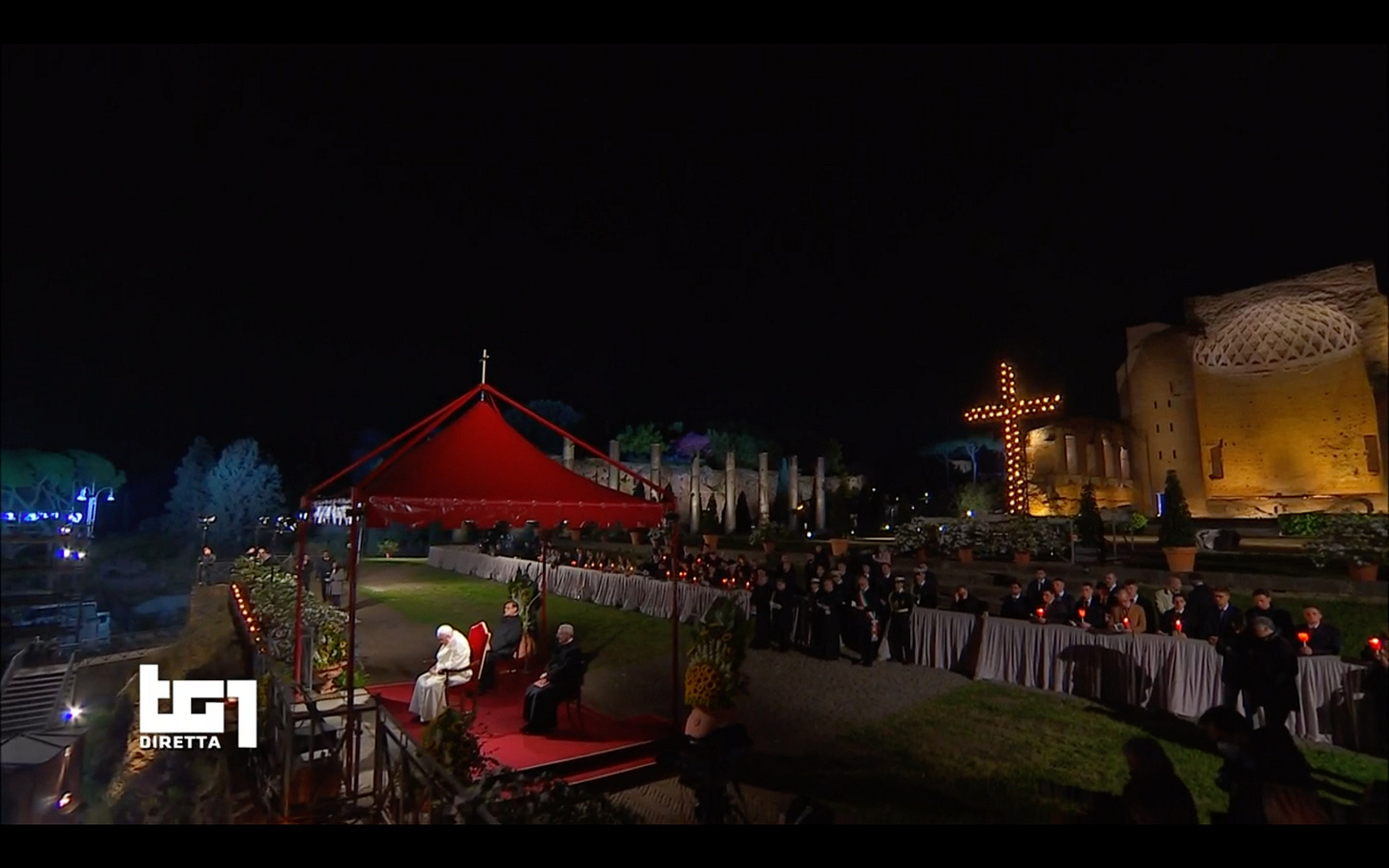The Papal Via Crucis: The Ashes of Empire and the Phoenix of the Church
Two weeks ago, for the first time since 2019, Pope Francis presided over the Good Friday Via Crucis procession at the Colosseum. The tradition of a papal Via Crucis in the ruins of the Flavian Amphitheatre was instituted by Benedict XIV for the Holy Year of 1750. In 1870 the tradition was halted when Rome fell from papal control, Pius IX retreated within the walls of the Vatican, and a vehemently secular government embarked on an enthusiastic archeological project which stripped away many of the post-Imperial ecclesiastical accretions. In 1959 John XIII resumed the tradition, though only for that year, and it was only re-established as an annual tradition in 1965 during the papacy of Paul VI when for the first time it was broadcast by the RAI.
The papal procession is therefore rather less ancient than one might think. However a procession of the Via Crucis carried out by the Company of Santa Maria della Pietà (later superseded by the Confraternity of the Gonfalone) goes back much further.

A chapel was dedicated, perhaps as early as the seventh century, in the twenty-fourth entrance archway, and is certainly known of by 1192. It has been much modified but is still there, under the reconstructed section of seating next to the main entrance onto the arena floor.

Directly opposite the arch leading onto the arena, and just under the point this photo was taken from, is a fresco thought to date to the seventeenth century which depicts a map of Jerusalem with details including the Crucifixion.
The long association of the Colosseum with the Passion of Christ rests upon an undocumented traditional belief that it was the site of martyrdoms of early Christians. Saint Ignatius of Antioch and Saint Telemechus are said to have died here as martyrs but though the brutal persecutions of the Christians are known to have taken place elsewhere in Rome, there is no evidence for them having taken place in the Colosseum. Whether it actually happened or not, the image of Christians thrown to lions in the amphitheatre in Rome is nevertheless a persistent one and at the root of the long-standing association with the Passion of Christ.
A week or so before Good Friday, lighting rigs and RAI trucks began to appear. The Arch of Constantine was dominant, its level of preservation attributable to its erection by Constantine the Great, considered the first Christian emperor. The Arch of Constantine is the hinge upon which Rome’s history pivots: the emperor who legitimised Christianity marks the rise of the Church as an institution sanctioned by the State. Eighty years later, the Edict of Thessalonica would mark the culmination of that legitimisation and give the pope the title of the Roman high priest, the Pontifex Maximus. A hundred and fifty years after the Arch was built the Empire fell and, as the papal city advertises at every turn, from its ashes rose the phoenix of the Church.
And so it was that two weeks ago, firmly ensconced as we are in the twenty-first century, Pope Francis conducted a rite (both ancient and not) amid the ruins of the temple dedicated to Venus, mother of the Trojan hero Aeneas, and thus ancestor of Romulus: the ancestress then of Rome itself. Flaming torches and strategic lighting only added to the dramatic backdrop. At the centre an elderly Argentinian, invested with a title which was ancient even when Augustus held it, oversaw the solemn procession amid the ruins of a city built by the masters of the universe. The presumed invincibility of the emperors would, however, ultimately prove itself flawed; their vast Empire would fall, and would be supplanted by an upstart religion which had emerged from the East.






We tried & failed to find the chapel on our last visit to the colosseum. Better luck next time!
Thank you Agnes. We are endlessly amazed at the breadth and depth of your knowledge and your ability to impart it to others! We love listening to you and learning and realise just how little we know and how much there is still to learn - keeps us going!
Thank you, you have helped us to enjoy these last few years of our almost monastic lifestyle.
Looking forward to more cari saluti - Picones